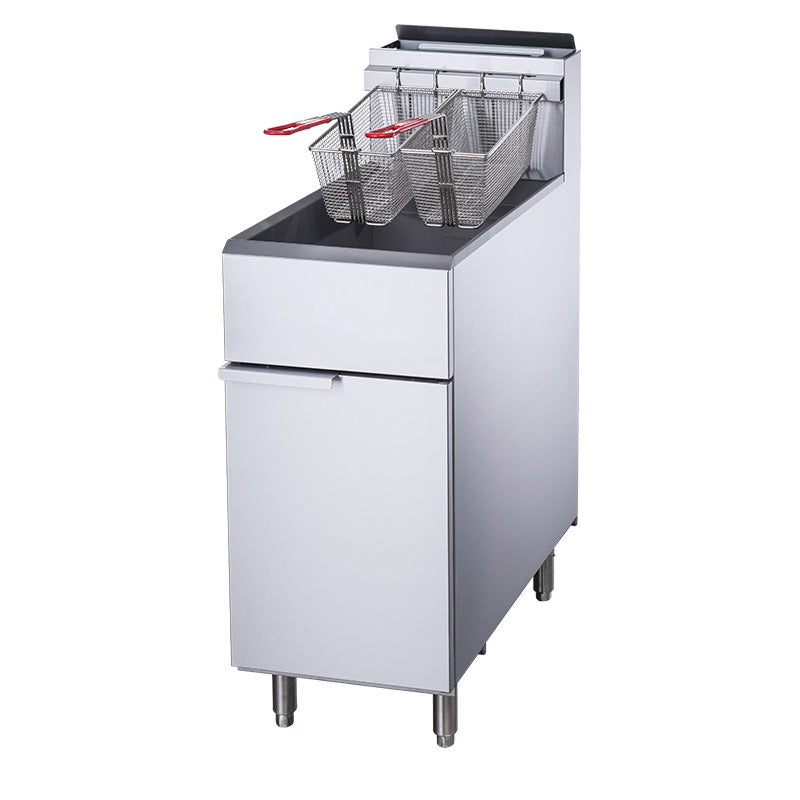Commercial fryers are essential equipment in many restaurants, foodservice establishments, and fast-food joints, where they play a crucial role in preparing crispy and delicious fried foods. The quality of fried dishes largely depends on the condition of the cooking oil used. To maintain both the flavor of your food and the safety of your customers, it's vital to know how often commercial fryer oil should be changed. In this blog, we'll explore the factors that affect the lifespan of fryer oil and provide guidelines for when to change it.
- Oil Quality and Flavor
One of the primary reasons to change fryer oil is to maintain the quality and flavor of your fried foods. Over time, as oil is exposed to high temperatures and food particles, it undergoes several changes that can affect the taste and texture of your dishes. Here are some common signs that the oil quality is declining:
- Flavor Alterations: Used oil can develop a rancid or off-putting taste, leading to unpleasant flavors in your food.
- Color Changes: Oil that has been used for an extended period may become dark and murky, negatively impacting the appearance of your fried items.
- Food Safety and Health Regulations
Ensuring food safety is paramount in any commercial kitchen. Used fryer oil can become a breeding ground for harmful bacteria if not properly maintained. Frequent oil changes are essential to meet health regulations and prevent foodborne illnesses. Keeping your oil clean and free from contaminants is crucial to providing safe food to your customers.
- Oil Degradation
Commercial fryer oil degrades over time due to exposure to high temperatures, food particles, and oxygen. As oil breaks down, it becomes less stable and prone to producing undesirable compounds, such as free fatty acids. These compounds can affect the taste and quality of your fried dishes. To maintain the stability of your oil and ensure consistent cooking results, regular oil changes are necessary.
Guidelines for Changing Fryer Oil
The frequency of oil changes can vary depending on several factors, including the type of food you fry, the temperature at which you fry, and the quality of the oil you use. However, here are some general guidelines to help you determine when it's time to change your commercial fryer oil:
-
Fryer Oil Testing: Regularly test your oil using test strips or oil analyzers. These tools can measure the levels of Total Polar Materials (TPM) or Free Fatty Acids (FFA) in your oil. When these levels exceed recommended thresholds (usually 24-27% TPM or 2-3% FFA), it's time to change the oil.
-
Frequency of Use: If your fryer is in constant use, you may need to change the oil more frequently than if it's used sporadically. High-volume frying operations often require daily or weekly oil changes.
-
Food Type: Different foods leave different residues in the oil. Foods with breading or batter tend to accelerate oil degradation. If you primarily fry these types of foods, you may need to change the oil more frequently.
-
Filtration: Implement a regular oil filtration schedule. Proper filtration can extend the life of your fryer oil by removing food particles and impurities. However, filtration alone cannot indefinitely extend oil life, and regular oil changes are still necessary.
Conclusion:
If you're using your commercial fryer daily then it is best practice to change your oil daily. This will help maintain the quality and safety of your fried foods is contingent on the condition of your commercial fryer oil. Regular oil changes are not only essential for preserving the flavor and appearance of your dishes but also crucial for meeting food safety regulations. By following the guidelines provided and monitoring your fryer oil's condition, you can ensure that your fried offerings consistently delight customers and uphold the highest standards of food safety.


